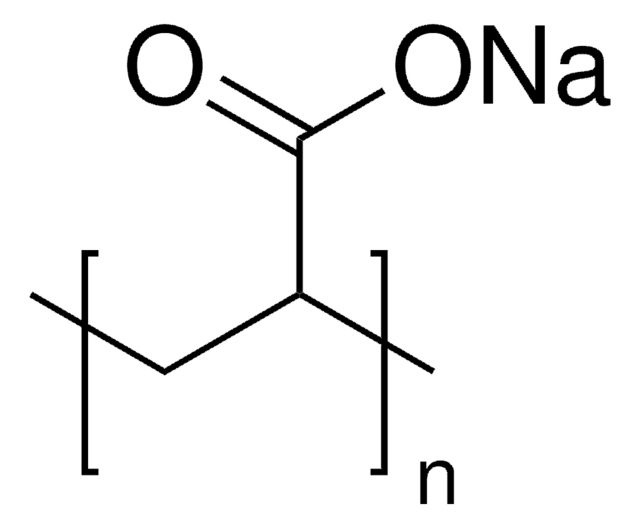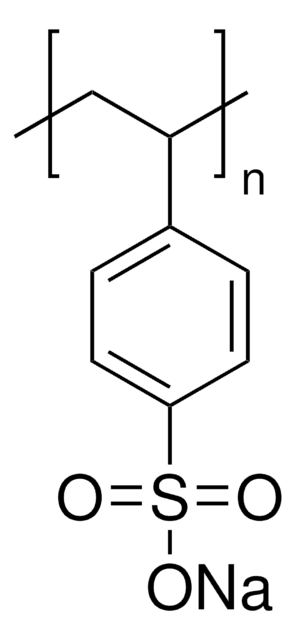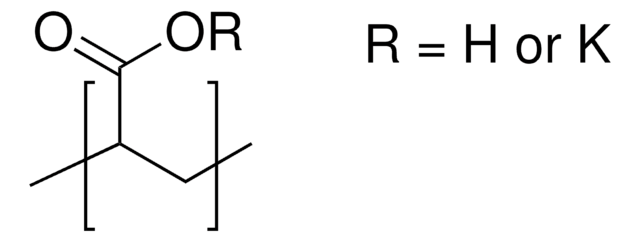420344
Poly(acrylic acid sodium salt)
average Mw ~2,100
Synonym(s):
Poly(sodium acrylate), Sodium polyacrylate
About This Item
Recommended Products
form
powder
mol wt
average Mw ~2,100
density
0.55 g/mL at 25 °C
InChI
1S/C3H4O2.Na/c1-2-3(4)5;/h2H,1H2,(H,4,5);/q;+1/p-1
InChI key
NNMHYFLPFNGQFZ-UHFFFAOYSA-M
Looking for similar products? Visit Product Comparison Guide
Related Categories
Application
- Poly (sodium acrylate) and Poly (acrylic acid sodium) as an eco-friendly corrosion inhibitor of mild steel in normal hydrochloric acid: experimental, spectroscopic and: Examines the effectiveness of poly(acrylic acid sodium salt) as a corrosion inhibitor, providing insights into its protective mechanisms (A Ouass et al., 2021).
- Synthesis, characterization, and swelling behaviors of salt-sensitive maize bran–poly (acrylic acid) superabsorbent hydrogel: Investigates the synthesis and properties of a superabsorbent hydrogel made from maize bran and poly(acrylic acid), highlighting its swelling behavior and potential applications (M Zhang et al., 2014).
- Hybrid dual crosslinked polyacrylic acid hydrogels with ultrahigh mechanical strength, toughness and self-healing properties via soaking salt solution: Describes the creation of high-performance polyacrylic acid hydrogels with enhanced mechanical and self-healing properties, suitable for various technological applications (X Li et al., 2017).
Storage Class Code
11 - Combustible Solids
WGK
WGK 1
Personal Protective Equipment
Choose from one of the most recent versions:
Already Own This Product?
Find documentation for the products that you have recently purchased in the Document Library.
Customers Also Viewed
Articles
Layer-by-Layer (LbL) Assembly, A "Gentle Yet Flexible" Method Toward Functional Biomaterials
We present an article that discusses two applications in particular; first, using these layers as polyelectrolyte membranes to control permeability.
Our team of scientists has experience in all areas of research including Life Science, Material Science, Chemical Synthesis, Chromatography, Analytical and many others.
Contact Technical Service





